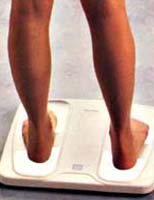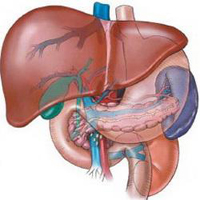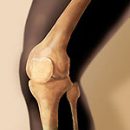Hepatic insufficiency - a pathological condition that can lead to hepatic coma. Whether death is inevitable in this case? You will learn about it by reading this article.
Content
Liver failure and its classification
Loading insufficiency - pathological condition characterized by violations of various types of metabolism in the body and intoxication of protein exchange products.
Endogenous liver insufficiency develops due to dystrophy or necrosis of liver cells and is observed, for example, with acute and chronic hepatitis, hepatosis, liver cirrhosis and other liver diseases.
 The endogenous liver failure is based on the nonspecific liver cell reaction to the action of damaging factors. The clinical picture is as follows: decline in appetite, disgust for tobacco in smokers, intolerance to food and alcohol, nausea, as well as weakness, reduction in disability, emotional disorders, etc.
The endogenous liver failure is based on the nonspecific liver cell reaction to the action of damaging factors. The clinical picture is as follows: decline in appetite, disgust for tobacco in smokers, intolerance to food and alcohol, nausea, as well as weakness, reduction in disability, emotional disorders, etc.
With a long chronic flow, the earth-gray shade of the skin or its jaggility is noted, signs of violations of vitamins (poor eyesight in the dark and DR.), endocrine disorders (in women - a lamination of the menstrual cycle, in men - a decrease in sexual attraction, impotence, testicular atrophy, women's type of exhaustion), skin lesions (for example, vascular «asterisk»), hemorrhage or bleeding (for example, gastrointestinal), swelling, ascites, etc. Typically, the symptoms of the underlying disease are also observed.
Under exogenous hepatic insufficiency, the process of intoxicating the metabolic products in the body and microbial toxins, sucking in the intestine and falling from the portal vein to the overall blood flow, bypassing the liver (for example, during the thrombosis of the portal vein). In this case, changes in liver cells can be minimal. Exogenous hepatic insufficiency manifested by periodically emerging mental disorders (emotional instability, irritability, insomnia at night and drowsiness in the afternoon, in the future consciousness) and neurological symptoms. These disorders are prolonged, usually they are completely or partially reversible.
Clinical flow distinguishes acute and chronic hepatic insufficiency. The first is observed mainly with acute hepatitis, liver dystrophy, as well as in some poisoning. Chronic liver failure develops gradually in patients with chronic hepatitis, liver cirrhosis. She slowly progresses and, reaching high degrees of gravity, like acute hepatic insufficiency, can lead to the development of hepatic coma.
The defeat of the central nervous system in the hepatic coma is due mainly disorders of metabolism. In this case, important concomitant factors are disorders of acid-alkaline equilibrium and water-salt metabolism, etc. As a result of these disorders, the processes of biological oxidation in the brain are oppressed, the transmission of excitation transmission in synapses and the oppression of the activity of the central nervous system occurs. With a hepatic coma usually observed massive necrosis of the main liver tissue.
Central place in the clinical picture of the hepatic coma occupy mental and neurological disorders. Depending on their severity, three stages of coma development are distinguished:
- Prema,
- threatening,
- Actually to someone.
The most important symptoms of the precance are emotional disorders (euphoria or depression, apathy, etc.), slowdown in thinking, sleep disorders (drowsiness day and insomnia at night), deterioration of orientation, sometimes difficulty speech, unmotivated behavior. In the stage of threatening coma, the confusion of consciousness is observed, disorientation in time and space, excitation attacks are possible, sometimes with nonsense, replacing depression and drowsiness. Characterized by clapping tremor fingers. With actually, a consciousness is absent, there are muscle tone disorders and others. In the first two stages of coma, the defeat of the central nervous system is completely reversible, rational treatment leads to the rapid disappearance of its symptoms.
In suspected, the presence of a hepatic coma of the patient should immediately hospitalize. Therapeutic measures in the hepatic coma include rational nutrition (elimination of the intake of the food protein and others.), suppression of education and removal from the body of toxic substances, restoration of biological oxidation processes, acid alkaline equilibrium and water-salt balance, etc. The forecast of the hepatic coma depends on its depth - in the early stages with energetic treatment, it is possible to recovery, in the stage of coma itself in most cases the process is irreversible.









